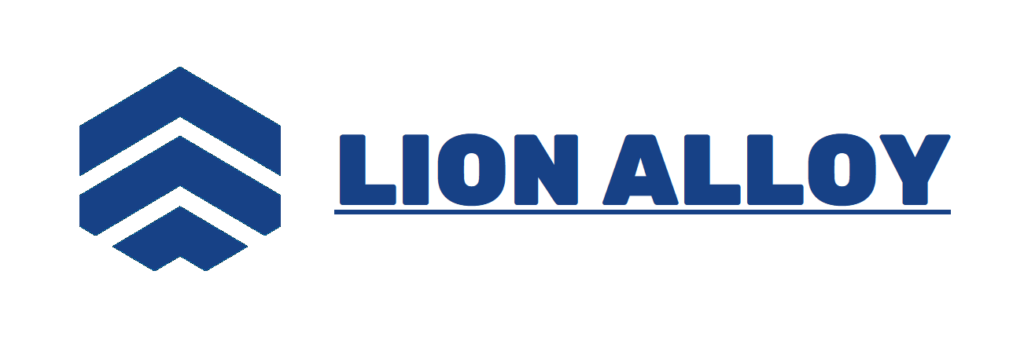소개 The selection of nickel alloy precision tubes requires careful consideration of multiple factors to ensure optimal performance in demanding industrial applications. This guide provides structured information using tables and detailed explanations to facilitate informed procurement decisions.
1. Understanding Nickel Alloy Precision Tubes 1.1 Key Advantages Advantage 설명 부식 저항 Exceptional resistance to various corrosive environments Temperature Performance Maintains mechanical properties at extreme temperatures (-196°C to 1200°C) 기계적 강도 High tensile strength and durability under stress 제작성 Good weldability and formability for manufacturing Service Life Extended operational lifespan in harsh conditions Stress Resistance Superior resistance to stress-corrosion cracking
2. Material Selection Guidelines 2.1 Common Nickel Alloy Grades Comparison 합금 등급 Nickel % Other Elements Key Properties Best Applications Alloy 600 (UNS N06600) 72+ Cr (14-17%), Fe (6-10%) Excellent oxidation resistance Heat treatment equipment, nuclear applications Alloy 625 (UNS N06625) 58+ Cr (20-23%), Mo (8-10%) Superior corrosion resistance Chemical processing, marine environments Alloy 800H/HT 30-35 Cr (19-23%), Fe (39.5% min) Enhanced high-temperature strength Petrochemical furnaces, heat exchangers Alloy 400 (Monel) 63+ Cu (28-34%) Exceptional seawater resistance Desalination plants, marine equipment 합금 X-750 70+ Cr (14-17%), Ti (2.25-2.75%) High strength and creep resistance Gas turbines, aerospace components Alloy C-276 55+ Mo (15-17%), Cr (14.5-16.5%) Extreme corrosion resistance Chemical processing, waste treatment
2.2 Selection Criteria Matrix Selection Factor Parameters to Consider Importance Level Operating Temperature Maximum/minimum temperatures, thermal cycling Critical Corrosive Environment Chemical composition, pH level, concentration Critical Pressure Conditions Maximum operating pressure, pressure fluctuations 높은 Mechanical Stress Tensile, compressive, and cyclic loading 높은 Service Lifetime Expected operational duration, maintenance intervals 중간 Cost Constraints Budget limitations, ROI expectations 중간
3. Specifications and Dimensions 3.1 Standard Dimensional Specifications 치수 Standard Range Tolerance Class A Tolerance Class B Outside Diameter (OD) 0.25mm – 50mm ±0.05mm ±0.10mm Wall Thickness 0.15mm – 5mm ±0.01mm ±0.03mm Length Up to 20m ±1.0mm ±3.0mm Straightness – 1mm/1m 3mm/1m Ovality – Max 1% of OD Max 2% of OD
3.2 Surface Finish Characteristics Finish Type Ra Value Appearance Best For Bright Annealed 0.2-0.5μm Mirror-like Sanitary applications, reduced friction flow Pickled and Passivated 0.8-2.0μm Matte Chemical resistance, general industrial use Mechanical Polished 0.1-0.8μm Uniform sheen Cosmetic applications, controlled friction Electropolished 0.05-0.2μm Highly reflective Semiconductor, pharmaceutical applications
4. Quality Standards and Certifications 4.1 International Standards Reference 기준 설명 적용분야 ASTM B163 Seamless nickel and nickel alloy condenser tubes Heat exchangers, condensers ASTM B167 Nickel-chromium-iron alloys seamless pipe and tube 일반적인 산업 응용 분야 ASTM B444 Nickel-chromium-molybdenum-columbium alloys pipe 심한 부식 환경 ASME SB-163 ASME Boiler code version of ASTM B163 Pressure vessels, boilers EN 10216-5 European standard for seamless tubes European market applications JIS G3463 Japanese standard for heat exchanger tubes Asian market compliance
4.2 Testing Requirements 테스트 유형 Method Acceptance Criteria Required For Chemical Analysis OES/XRF Within alloy specification limits All applications 인장 테스트 ASTM E8 Meet minimum requirements Structural applications Flattening Test ASTM A370 No cracks at specified angle Quality assurance Flaring Test ASTM A370 No cracks after specified expansion Quality assurance Hydrostatic Test ASTM E1003 No leakage at specified pressure Pressure applications Ultrasonic Testing ASTM E213 No indications above reference level Critical applications PMI Testing XRF Material verification All applications
5. Application-Specific Considerations 5.1 Industry Applications Matrix 산업 Common Alloys 주요 요구 사항 Critical Factors 화학 처리 C-276 , 625 , 600 Corrosion resistance, temperature stability Chemical compatibility, stress resistance 석유 및 가스 625, 825, C-276 Pressure rating, H₂S resistance Sour service rating, pressure capability 발전 800H /HT, 600, 617 High temperature strength, oxidation resistance Creep resistance, thermal cycling 항공우주 X-750, 718 , 625 Lightweight, high strength Fatigue resistance, weight optimization 선박 400 (Monel), 625 Seawater corrosion resistance Galvanic compatibility, biofouling resistance 핵무기 600, 690, 800H/HT Radiation resistance, thermal stability Nuclear grade certification, traceability
6. Procurement Guidelines 6.1 Required Documentation Checklist 문서 유형 Required Information 중요성 재료 테스트 인증서 (MTC) Chemical composition, mechanical properties Mandatory Quality Assurance Certificate Manufacturing process compliance Mandatory Inspection Reports Dimensional, visual, and NDE results Mandatory Traceability Documentation Heat number, lot identification Mandatory Performance Test Results Application-specific testing As specified PED/ASME Certification Pressure equipment compliance When applicable
6.2 Supplier Evaluation Matrix 평가 기준 Weight 평가 방법 Manufacturing Capabilities 20% Facility audit, capacity verification 품질 관리 시스템 25% ISO certification, rejection rate history 기술 지원 15% Response time, expertise evaluation Delivery Performance 15% On-time delivery record, lead time Industry References 10% Client feedback, industry reputation 가격 경쟁력 15% Comparative quote analysis
7. Cost Considerations 7.1 Cost Component Breakdown Cost Component Typical % of Total Influencing Factors Raw Material 50-70% Alloy grade, market conditions Manufacturing 15-25% Complexity, special processing Testing 5-15% Level of inspection, special tests Certification 3-8% Required standards, third-party verification Packaging & Logistics 5-10% Shipping distance, protection requirements
8. Selection Process Flowchart Step-by-Step Selection Guide Step Action Considerations Output 1 Define Application Requirements Operating conditions, environment Requirements specification 2 Material Grade Selection Refer to Section 2 tables Material shortlist 삼 Specification Definition Dimensions, tolerances, finish Technical specification 4 품질 요구 사항 Testing, certification needs Quality plan 5 Supplier Selection Use supplier evaluation matrix Qualified supplier list 6 Request for Quotation Include all specifications Detailed quotations 7 Evaluation and Selection Price, quality, delivery time Purchase order
9. Conclusion Selecting the appropriate nickel alloy precision tubes requires a systematic approach considering multiple factors from material properties to application requirements. This tabular guide provides structured information to streamline the decision-making process.
Key Recommendations: Always match the alloy grade to specific environmental conditions Consider long-term performance over initial cost Require comprehensive documentation and testing Work with suppliers who provide technical expertise Verify compliance with relevant industry standards Note: All specifications and standards mentioned should be verified with current industry requirements, as they may be updated over time.


